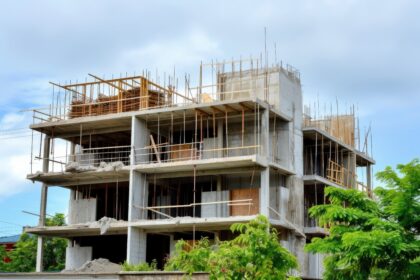Summary
When water damage strikes, acting quickly can significantly reduce damage and protect your belongings before professionals arrive. Homeowners should prioritize safety by turning off electricity, avoiding standing water, and wearing protective gear. Next, stop the water source, whether by shutting off the main valve or temporarily patching leaks, and remove excess water using mops, towels, or a wet/dry vacuum. Protect valuables and electronics by elevating them or placing them in waterproof containers. Improve airflow with open windows, doors, and fans, while being cautious if the water is contaminated. Document the damage with photos, videos, and lists for insurance purposes, and avoid DIY chemical treatments that could be hazardous or complicate professional restoration. Acting quickly, safely, and methodically can minimize structural damage, prevent mold growth, and make the eventual professional cleanup more effective.
–
Introduction
Water damage in your home can be overwhelming and stressful. Whether it’s due to a burst pipe, a leaking roof, or a sudden flood, the first few hours after water intrusion are crucial. Acting quickly can prevent further damage, save your belongings, and make professional restoration easier. While professional Water damage repair experts are trained to handle the cleanup safely and thoroughly, there are critical steps homeowners can take immediately to mitigate the damage.
Understanding the First 24 Hours: Why Immediate Action Matters
The first 24 hours after water damage occurs are critical, and understanding their importance can make a significant difference in the outcome. Immediate action helps prevent further structural damage, limits mold growth, and protects your personal belongings. Engaging professional water damage restoration services during this window ensures that water is quickly extracted; affected areas are thoroughly dried, and potential hazards are addressed before they escalate. Acting promptly not only reduces long-term repair costs but also safeguards your home’s health and safety, making the initial response a decisive factor in the overall recovery process.
1. Ensure Safety First
Before you touch anything, your safety is the top priority. Water-damaged areas can be dangerous.
- Turn off electricity: If water is near electrical outlets or appliances, switch off the main power at the breaker. Electricity and water are a deadly combination.
- Avoid standing water: Floodwater can hide hazards such as sharp objects, chemicals, or contaminants.
- Wear protective gear: Use rubber gloves, boots, and even a mask if mold is visible or suspected.
Safety first ensures you won’t worsen the situation or put yourself at risk.
2. Stop the Water Source
Identifying and stopping the source of water is crucial to preventing ongoing damage.
- Shut off the main water valve if a burst pipe is causing flooding.
- Patch minor leaks temporarily with duct tape or plumber’s putty until a professional arrives.
- Redirect water flow using buckets or towels if possible, but never put yourself in harm’s way.
This step reduces water exposure and prevents further structural damage.
3. Remove Excess Water
Even before professionals arrive, removing standing water can reduce long-term damage.
- Use mops, towels, or a wet/dry vacuum to soak up water from floors.
- Elevate furniture on blocks or move items to higher ground to protect them from soaking.
- Open doors and drawers to allow trapped water to escape.
Remember, speed matters. The longer water sits, the higher the risk of structural damage and mold growth.
4. Protect Valuables and Electronics
Water can irreversibly damage your electronics and important documents.
- Move electronics to a dry area and unplug them.
- Lift important documents, photos, and books to a safe, elevated space.
- Wrap items in plastic or sealable bags to prevent further water absorption.
Even temporary protection can save expensive items from permanent damage.
5. Improve Airflow and Ventilation
Moisture creates the perfect environment for mold and mildew, which can develop within 24-48 hours.
- Open windows and doors if the weather permits.
- Use fans or portable air movers to circulate air.
- Remove wet carpets or rugs to let floors dry faster.
However, avoid using fans if floodwater is contaminated, as it can spread bacteria and mold spores.
6. Document the Damage
Insurance claims can be complicated if there’s no evidence of damage.
- Take photos and videos of affected areas and belongings.
- Make a list of damaged items, including approximate values.
- Keep receipts if you need to purchase temporary cleanup supplies.
Proper documentation ensures a smoother insurance process and helps professionals assess the damage more accurately.
7. Avoid DIY Chemical Treatments
It might be tempting to use cleaning chemicals immediately, but it’s often better to wait for professionals.
- Do not mix cleaning agents, as this can create toxic fumes.
- Avoid using bleach on porous surfaces without guidance.
- Let experts handle sanitization, especially in cases of contaminated floodwater (Category 2 or 3 water).
Premature cleaning can sometimes make professional restoration harder or unsafe.
Final thought
In conclusion, homeowners facing water intrusion must act swiftly and deliberately to minimize damage and protect their property. Prioritizing safety, shutting off electricity if needed, and removing standing water are essential first measures. Equally important is initiating water cleanup by using mops, towels, or a wet-dry vacuum to reduce moisture and prevent mold growth while waiting for professionals. Taking these immediate steps not only preserves structural integrity but also helps ensure that restoration experts can work more efficiently once they arrive.


